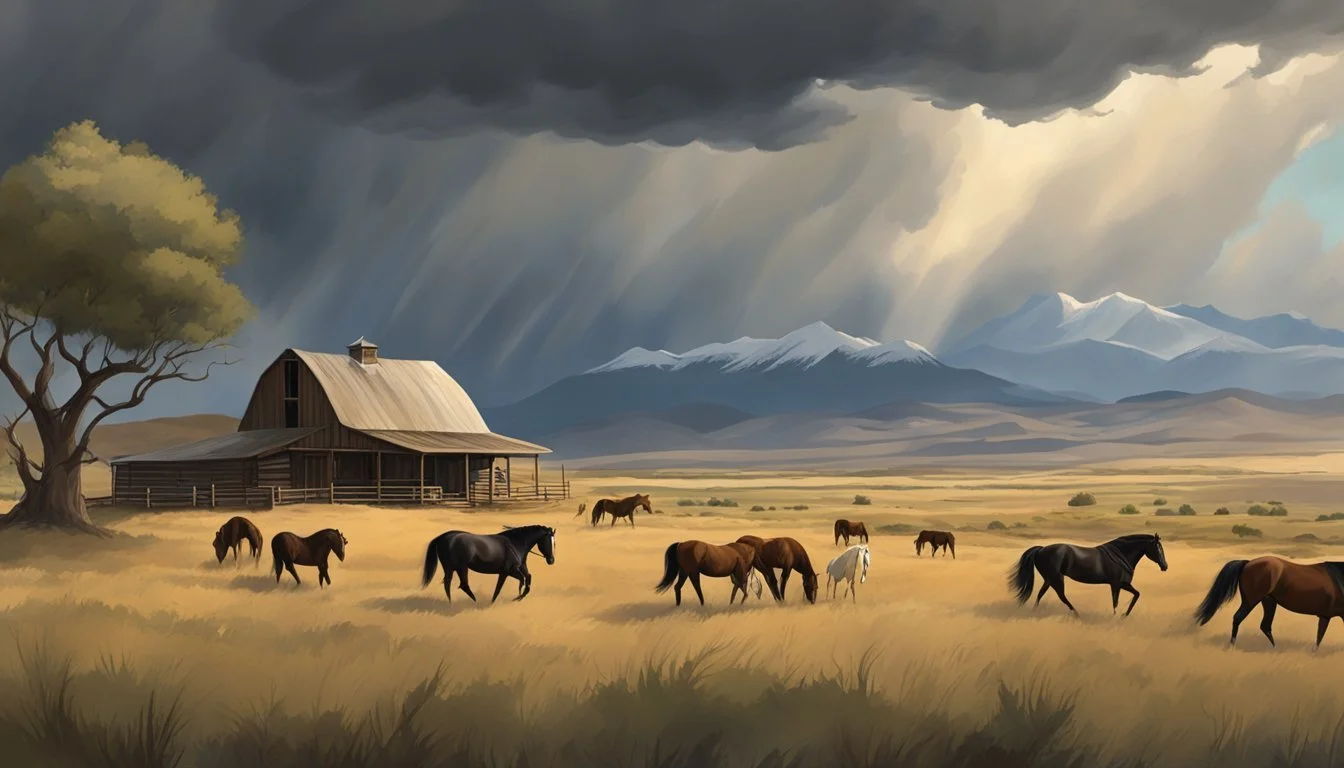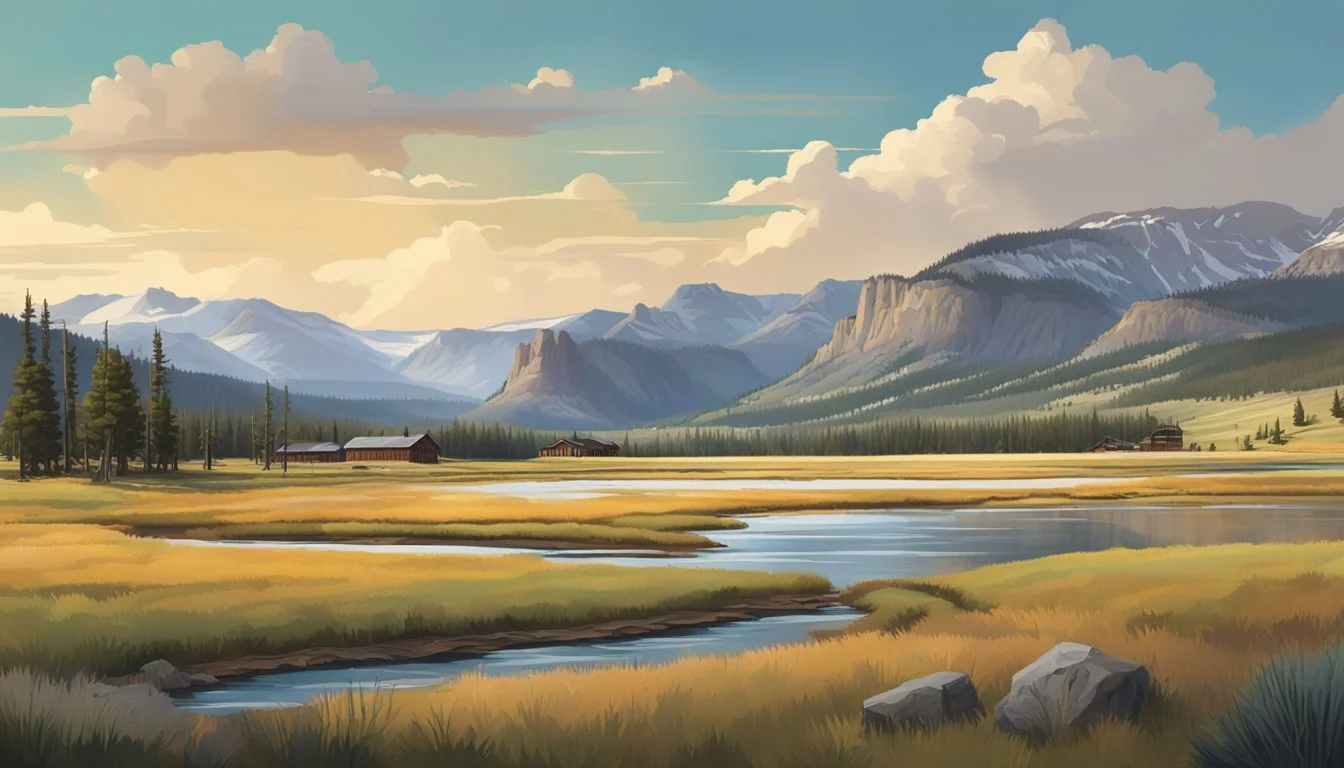Outsiders in Yellowstone: Challenging the Dutton Dynasty
New Rivals Shake Up Power Balance
Yellowstone, Taylor Sheridan's gripping drama on the Paramount Network, centers around the powerful Dutton family and their sprawling Montana ranch. While the Duttons, led by patriarch John Dutton (Kevin Costner), fiercely protect their legacy, the show also explores the perspectives of outsiders who challenge their dominance.
These outsiders bring fresh dynamics to Yellowstone, often serving as catalysts for change and conflict within the Dutton dynasty. From rival ranchers and land developers to Native American tribes reclaiming their ancestral territories, various forces threaten the Duttons' grip on their empire. The tension between insiders and outsiders creates a compelling narrative that keeps viewers on the edge of their seats.
The introduction of outsiders not only provides dramatic tension but also allows for deeper exploration of the Dutton family's values and motivations. As they face external pressures, characters like John Dutton and his children must confront their own beliefs and the true cost of maintaining their legacy. This interplay between insiders and outsiders forms the heart of Yellowstone's complex and captivating storytelling.
The Foundations of the Dutton Dynasty
The Dutton family's legacy spans generations, rooted in the American West's tumultuous history. Their journey from post-Civil War settlers to modern-day ranching titans embodies the spirit of frontier expansion and tenacious perseverance.
The Historical Roots
James Dutton, the family patriarch, embarked on a westward journey in 1883. Leaving Tennessee behind, he sought a new life for his wife Margaret and children Elsa, John, and Spencer. Their arduous trek across the country culminated in Montana, where tragedy struck as Elsa succumbed to her injuries. James chose this spot to establish the Dutton homestead, laying the foundation for what would become the vast Yellowstone Ranch.
The family's early years were marked by struggle and adaptation to the harsh Montana landscape. James and Margaret's determination set the tone for future generations, instilling a fierce commitment to preserving their land and legacy.
Evolution Over Generations
As the 20th century dawned, the Duttons faced new challenges. John Dutton I, James's son, weathered the storms of the Great Depression in 1923. His leadership during this tumultuous period solidified the family's reputation as resilient ranchers.
John Dutton II further expanded the ranch's influence, navigating the changing economic and political landscape of post-World War II America. His efforts paved the way for John Dutton III, the current patriarch in the Yellowstone series.
Each generation adapted to new threats:
Economic downturns
Encroaching development
Political pressures
Changing agricultural practices
The Duttons' ability to evolve while maintaining their core values has been key to their longevity and power in Montana's ranching community.
The Yellowstone Ranch: A Battleground over Time
The Yellowstone Ranch stands as a symbol of power and conflict in Montana's Paradise Valley. This vast property has attracted fierce competition and faced numerous threats to its survival over generations.
Land and Power
The Dutton Ranch spans an estimated 776,000 acres, rivaling the size of Rhode Island. John Dutton, as both ranch owner and Livestock Commissioner, wields significant influence in the region. The ranch's immense size grants the Duttons control over vital resources like water rights and grazing lands.
This concentration of land and power has not gone unchallenged. Neighboring entities like the Broken Rock Reservation have long-standing claims to portions of Dutton territory. Corporate interests, such as Market Equities, see the ranch as prime real estate for development projects.
Conflict and Survival
The Dutton family faces constant pressure to maintain their hold on the ranch. Legal battles, political maneuvering, and even violence have become part of daily life. John Dutton's role as Livestock Commissioner often blurs the lines between personal interest and public duty.
Ranch life itself presents ongoing challenges. Harsh weather, predators, and economic fluctuations threaten the viability of their cattle operation. The Duttons' commitment to preserving their way of life comes at a high cost, with family members often sacrificing personal happiness for the greater legacy.
Tragedy has struck the Duttons repeatedly, from attacks on family members to environmental disasters. Yet their deep connection to the land and determination to protect their heritage drives them to fight on, no matter the odds.
Anatomy of the Dutton Family
The Dutton family's complex dynamics and powerful personalities shape the core of Yellowstone's drama. Their relationships, both within and outside the family, drive the series' central conflicts and alliances.
The Family Members
John Dutton III, portrayed by Kevin Costner, leads the Dutton clan as the stoic patriarch. His children form a diverse and often conflicted group. Beth Dutton, sharp-tongued and fiercely loyal, serves as her father's most trusted ally. Kayce Dutton, a former Navy SEAL, struggles with PTSD and balancing family duties.
Jamie Dutton, the adopted son, faces constant inner turmoil and familial rejection. Lee Dutton, the eldest son, met an untimely death in the series premiere. Evelyn Dutton, John's late wife, still influences family dynamics through memories and flashbacks.
Alliances and Enmities
Within the Dutton family, alliances shift and tensions simmer. Beth and Jamie's relationship is marked by deep-seated animosity and mistrust. Kayce often finds himself torn between loyalty to his father and his wife, Monica Dutton.
Rip Wheeler, though not a blood relative, holds a special place in the family as Beth's partner and John's right-hand man. His unwavering dedication to the Duttons contrasts with the complexities of the biological family members.
Tate Dutton, Kayce and Monica's son, represents the future of the family legacy. His presence often highlights the ongoing struggle between preserving tradition and adapting to change.
Depictions and Interpretations
Yellowstone's portrayal of outsiders challenging the Dutton dynasty has sparked discussions about cultural representation and narrative expansion. The show's depictions have both captivated audiences and drawn criticism.
Cultural Impact
Yellowstone's portrayal of Native American characters has been a focal point of cultural discourse. The show features the fictional Broken Rock Indian Reservation, attempting to incorporate authentic Indigenous representation. However, this depiction has faced scrutiny. Some praise the series for bringing Native American issues to mainstream attention, while others argue it perpetuates stereotypes.
The character of Monica Dutton, played by Kelsey Asbille, serves as a bridge between cultures. Her role as John Dutton's daughter-in-law highlights the tensions between traditional ranch life and Indigenous perspectives. This dynamic adds depth to the show's exploration of cultural clashes in modern Montana.
Expansion of the Story Universe
Taylor Sheridan's Yellowstone has spawned a broader narrative universe, expanding beyond the core series. Prequels like 1883 and 1923 delve into the Dutton family's history, providing context to their present-day struggles. These spin-offs offer fresh perspectives on the challenges faced by settlers and Indigenous peoples in earlier eras.
The upcoming 6666 series promises to explore ranch life in Texas, further broadening the show's scope. This expansion allows for a more diverse range of characters and storylines, potentially addressing criticisms of the original series' narrow focus.
Paramount+ has become the primary platform for this expanding universe, capitalizing on Yellowstone's popularity to create a comprehensive Western drama franchise.
Preserving the Yellowstone Dutton Legacy
The Dutton family's struggle to maintain control of their vast ranch intertwines with their efforts to safeguard a generations-old legacy. Their fight against external threats and internal conflicts shapes the future of the Yellowstone.
Towards the Future
John Dutton Sr.'s vision for the ranch continues to guide the family's actions. His descendants face mounting pressure from Market Equities and other corporate interests seeking to develop the land. The Duttons employ various strategies to protect their holdings, including strategic alliances and legal maneuvers.
CBS's portrayal of the Dutton dynasty highlights the family's deep-rooted connection to the land. This bond drives their fierce determination to keep the ranch intact for future generations. The family tree expands as new members are born or brought into the fold, each playing a role in upholding the Dutton name.
Challenges and Adaptations
The Duttons confront numerous obstacles in their quest to preserve their legacy. Environmental concerns, economic pressures, and political changes force the family to adapt their ranching practices. They explore sustainable methods and diversify their operations to ensure the ranch's viability.
Revenge and survival often become intertwined as the Duttons face threats from rivals. Their responses to these challenges test the limits of their moral boundaries and legal standing. The family's ability to navigate these complex situations proves crucial to maintaining their grip on the Yellowstone.
Madison, the nearby town, serves as a backdrop for many of the Duttons' business dealings and conflicts. The family's influence extends beyond their property lines, impacting local politics and economics. This wider reach becomes both an asset and a liability in their ongoing struggle to preserve their way of life.





